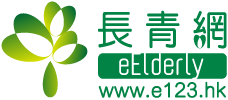【明報專訊】In 2009, Dongui Bogam (《東醫寶鑑》), a Korean work about medicine, was listed as cultural heritage by the United Nations Educational, Scientific and Cultural Organisation (UNESCO). According to Wang Guoqiang (王國強), director of the State Administration of Traditional Chinese Medicine, much in Dongui Bogam was borrowed from traditional Chinese medicine (TCM) and that adequately evidences TCM's internationalisation.
Since 2003, China has been making preparations for its application for getting TCM listed as UNESCO world intangible cultural heritage (聯合國世界非物質文化遺產). It was first thought that the eight fields of TCM (such as Chinese medical theories, health-keeping (養生), therapy (療法) and acupuncture-moxibustion (針灸)) should form a "package". Nevertheless, Wang Guoqiang thought that the package would be too complicated to be comprehensible to foreign experts. It was therefore decided that a step-by-step approach be adopted. Acupuncture-moxibustion was chosen as the first item of China's application. Wang explained that, as acupuncture-moxibustion was quite popular in the West, it would be easier for foreigners to understand and accept it.
■Did you know...
UNESCO intangible cultural heritage may include oral traditions, performing arts, social practices, rituals, festive events, knowledge and practices concerning nature and the universe and knowledge and skills of producing traditional crafts. Twenty two of the 2009 listings are from China, including yueju (Cantonese opera, 粵劇).
■Keywords
United Nations Educational, Scientific and Cultural Organisation (UNESCO)……聯合國教育、科學及文化組織
Chinese medicine……中醫/中藥
■Questions
1. Which field of TCM is the mainland trying to get listed as world intangible cultural heritage? Why?
2. To what extent is the Korean success proof of TCM's value?
3. TCM practitioners emphasise the importance of observation, auscultation and olfaction, interrogation, and pulse feeling and palpation (望聞問切). To what extent are the methods of diagnosis in keeping with traditional Chinese culture?
■Further readings
1. Ministry of Health of the PRC (中國衛生部): http://www.moh.gov.cn
2. State Administration of Traditional Chinese Medicine of the PRC (國家中醫藥管理局): http://www.satcm.gov.cn



